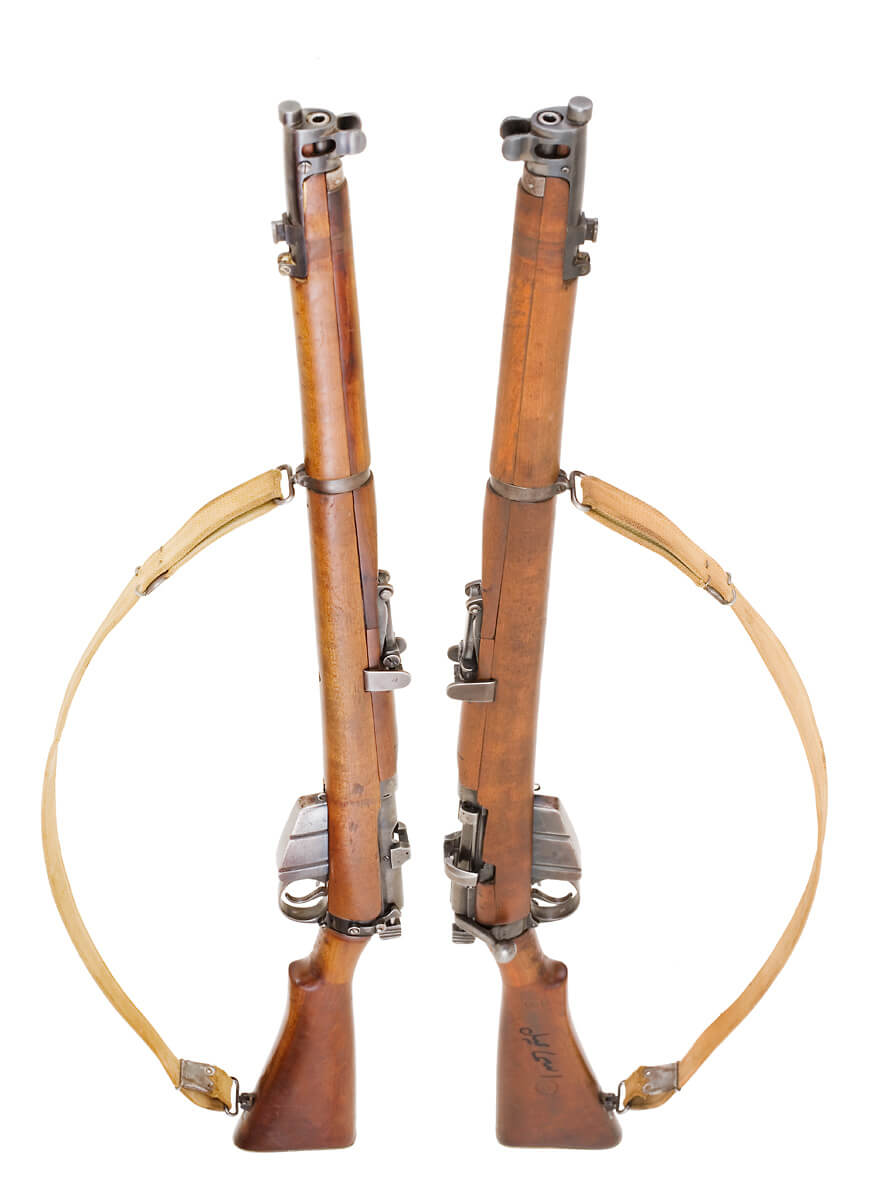303 British story began in 1889 with the Lee-Metford and Martini-Metford rifles. Polygonally rifled barrels were used to eek out the most velocity from the new 215-grain jacketed bullet propelled by compressed black powder, and also to reduce fouling. A switch to hotter-burning Cordite almost-smokeless powder followed sooner after, and with that came rapid threat and barrel erosion. Lee rifles were thereafter equipped with conventionally rifled barrels, and the cupro-nickel bullet jackets were thickened to resist the more energetic engraving during firing. While delivering excellent penetration on thick-skinned African game, the bullets were judged “excessively humane”, which is to say less effective on soft-skinned humans than desired. The bullets, still round nose 215-grainers were issued with soft point, then hollow point. Their effect upon human-size foes was formidable, but the 1899 Hague Convention outlawed deforming projectiles under a pound. For the next decade, the only development was moving from 8-round magazines singly loaded to 10-rounders loaded with 5-round stripper clips.
This opened the second chapter in the story: by 1910, 174gr spitzer design was introduced. Hague-compliant, it was the original “poison bullet” long before the Soviet 5.45x39mm came into being. Not only was the bullet fast enough to cause hydrostatic shock, it featured lightweight nose filler, either aluminum, wood pulp, or plastic, to help the projectile destabilize rapidly upon impact. The rapid yaw in flesh, combined with a jacket thin enough to rupture in hitting bone, produced wounds even nastier than the old expanding roundnose designs. That, and improved ability to cycle through automatic weapons, made the cartridge better for military service. The same tendency to inflict massive wounds within the thickness of a human body made the round suddenly less ideal for big game. As a result, parallel production of hunting ammunition continued alongside military production. The caliber was vastly popular in the British Commonwealth countries, and also used in Japan for Lewis-based flexible aircraft guns. It proved easier to manufacture a third type of 7.7mm cartridge, in addition to rifle rimless and machine gun semi-rimmed, than to re-design the machine gun. UK followed the same path during WW2, manufacturing 8mm Mauser cartridge solely for Besa tank machine guns.

From 1910 to 1954, most 303 ammunition had corrosive primers and erosive powder. The wide variety of armor-piercing, exploding, tracer, and spotter rounds are neither available nor relevant to American shooters. As the military use of 303 waned, hunters all over the world took up military surplus rifles. 303 remains in wide use in Canada and Australia. For a time, military surplus 303 was available and affordable. Greek and South African ball ammunition was non-corrosive, older British was not. Pakistani surplus was less than safe in use due to questionable storage conditions. In the US, available commerical ammunition usually features expanding hunting bullets, but most of them are too light for the caliber at 150 grains. For the fast twist Enfield barrels, that’s not ideal, nor does it provide penetration for bigger game. The one 180gr load is quite expensive. With this in mind, Steinel expanded the third chapter in the story of 303 with two loads.
174gr FMJ is a basic ball round, loaded to higher standards of consistency than typical of military surplus. This cartridge feeds in all Enfield and P1914 rifle, including #4 which can be picky about round nose profiles. It’s economical to shoot, and will maximize performance possible with iron sights. Bullet weight matches the original, velocity is on the mild side at 2300fps, making it a very pleasant round for recreational plinking and target shooting.
174gr Hornady soft point round nose provides consistent non-fragmenting expansion desired for larger deer, bear, boar, and other medium-large game. Loaded to milder 2000fps, it is ideal for scoped rifles. Recoil is minimal, making for fast and easy follow-up shots as needed. Again, Steinel has been able to provide this very accurate, high-performing load more economically than other US manufacturers. Both cartridges use new reloadable Boxer brass.



Thank you! This was very informative!
Thx